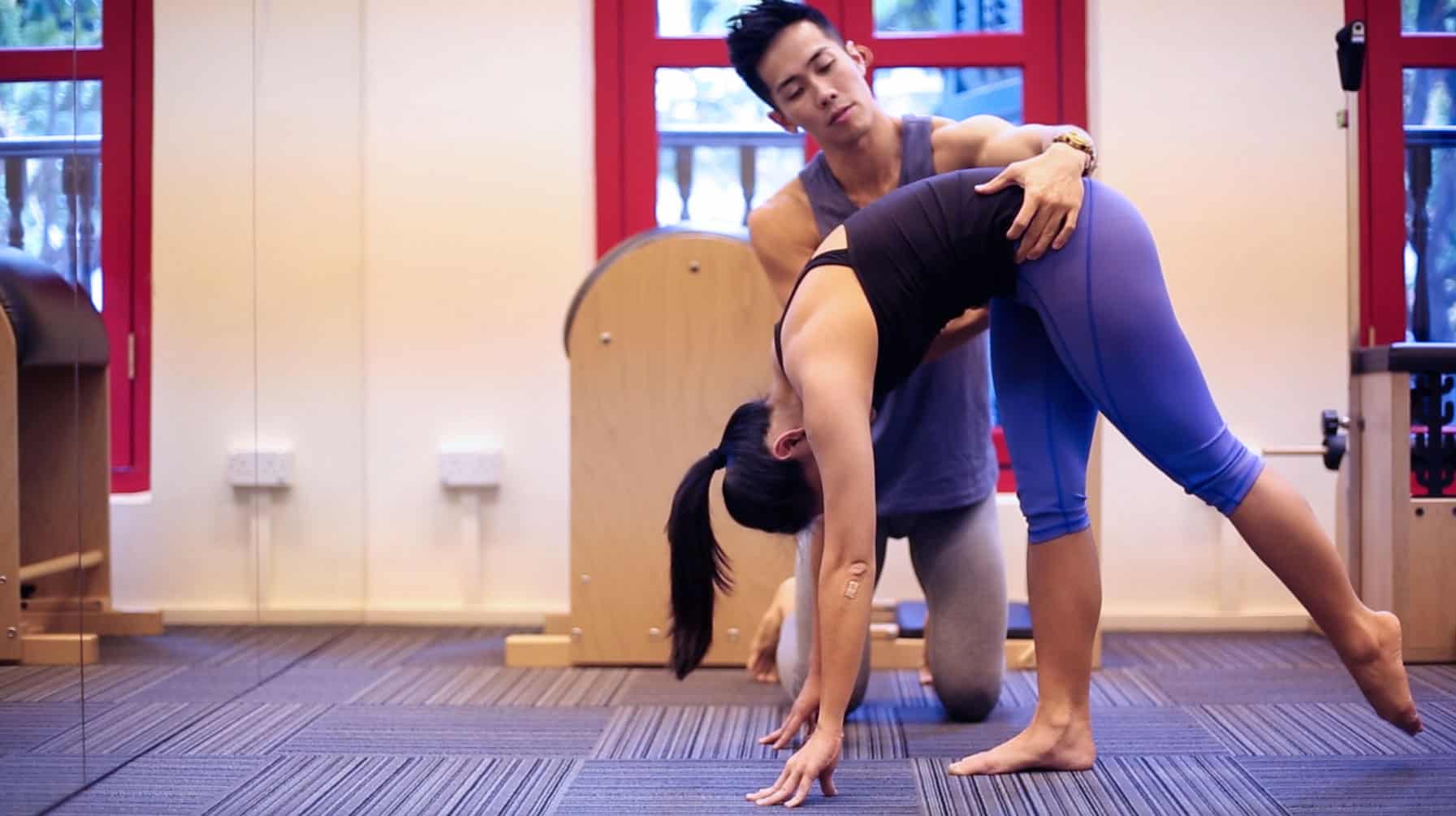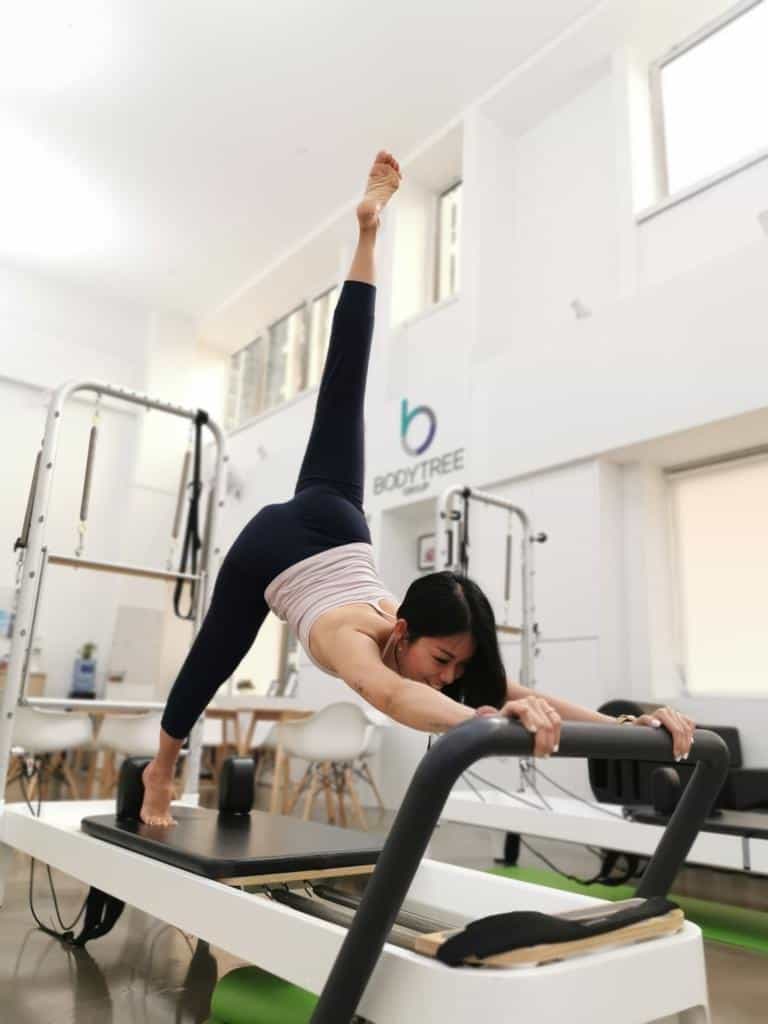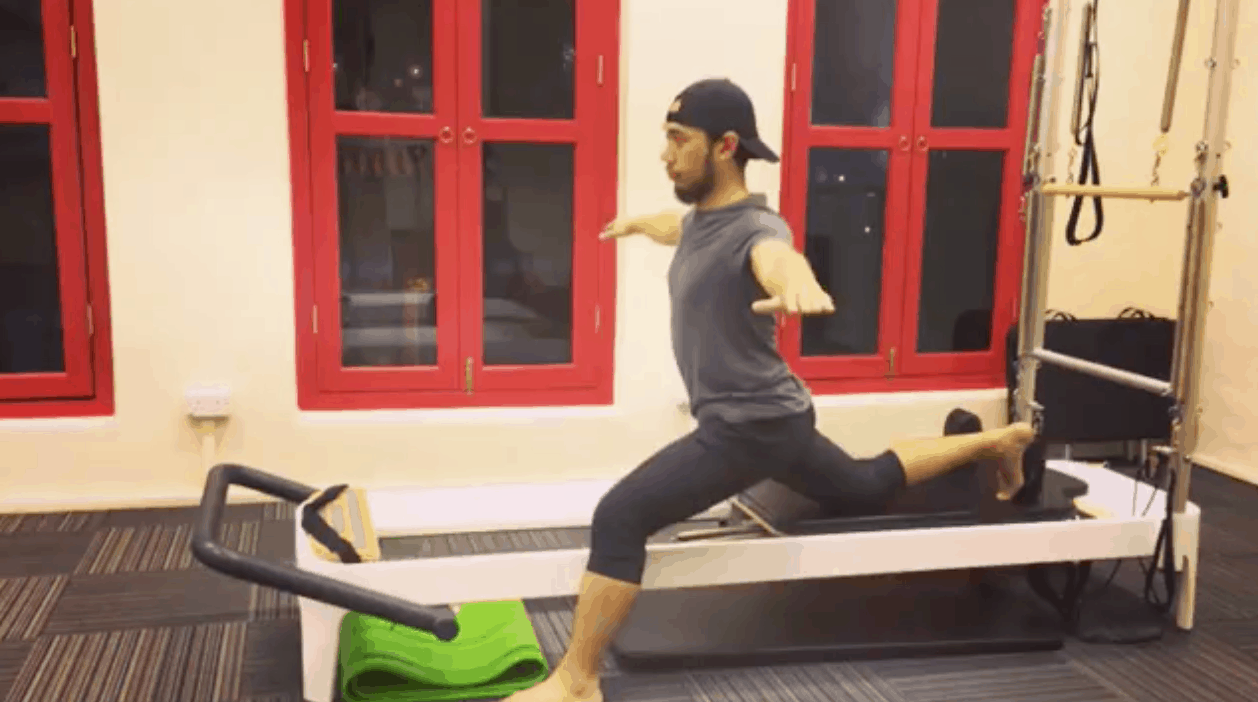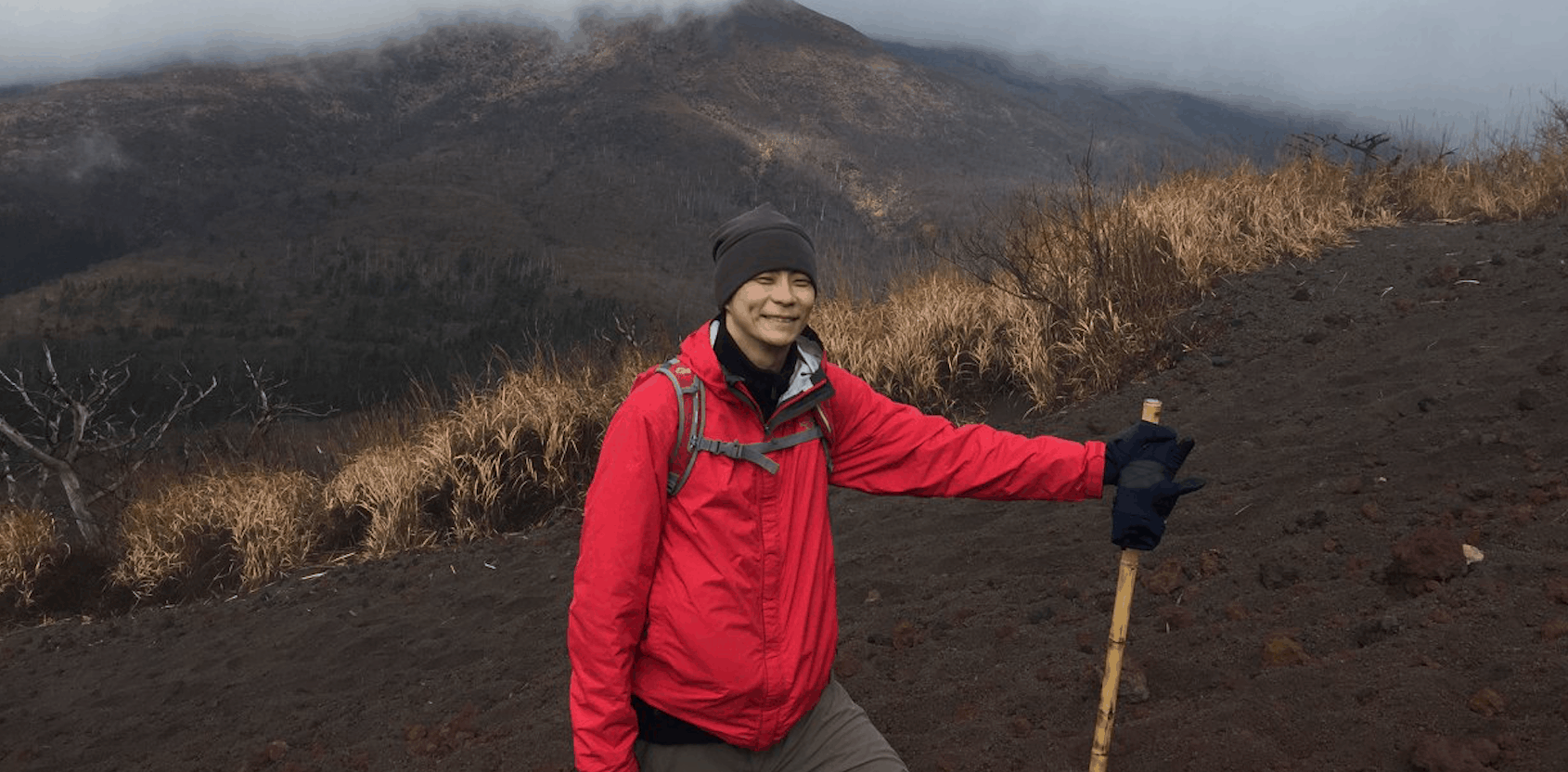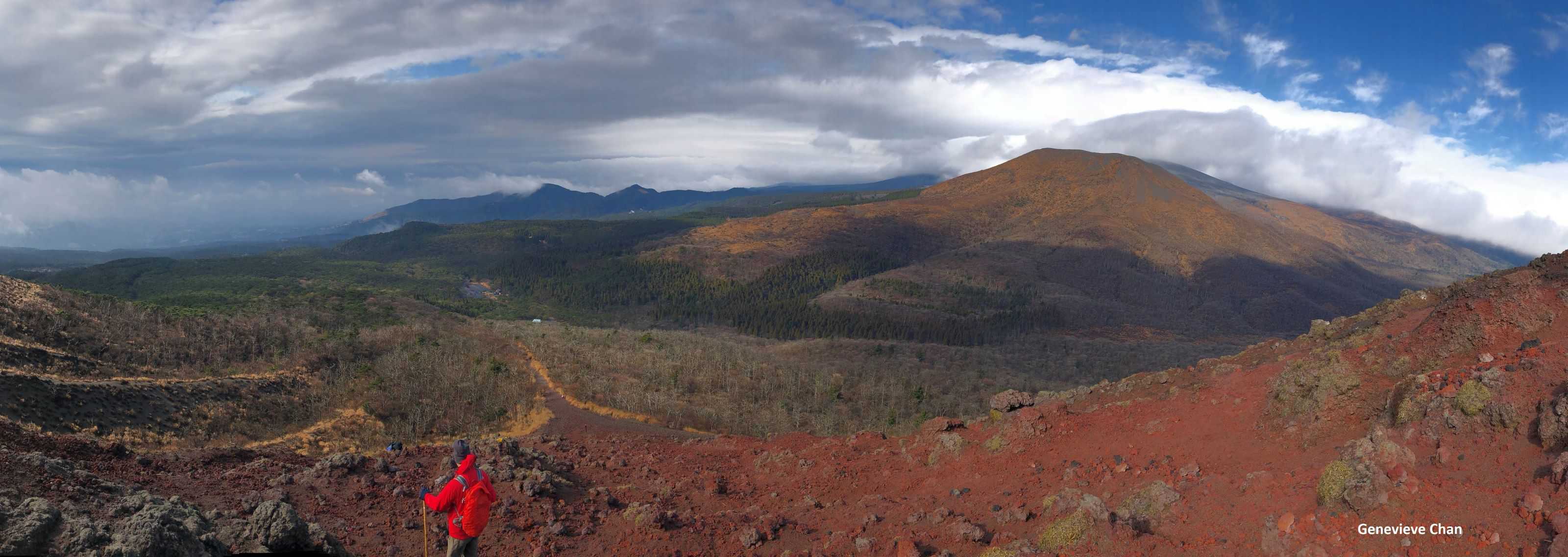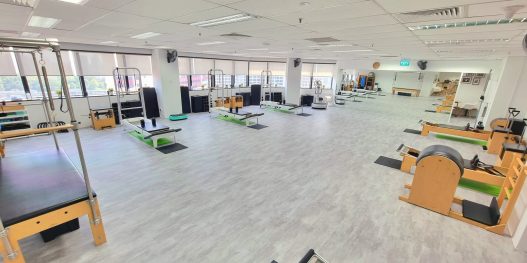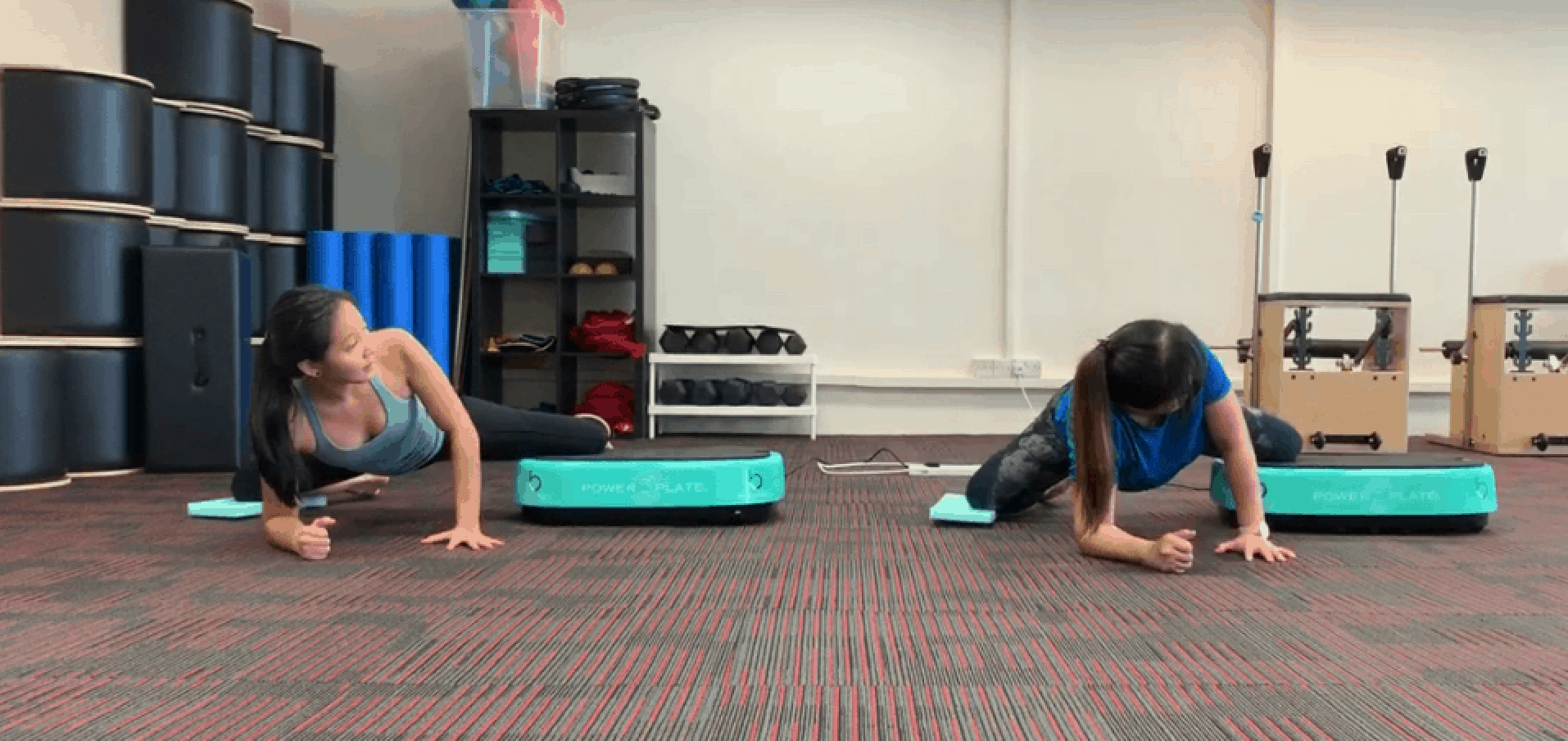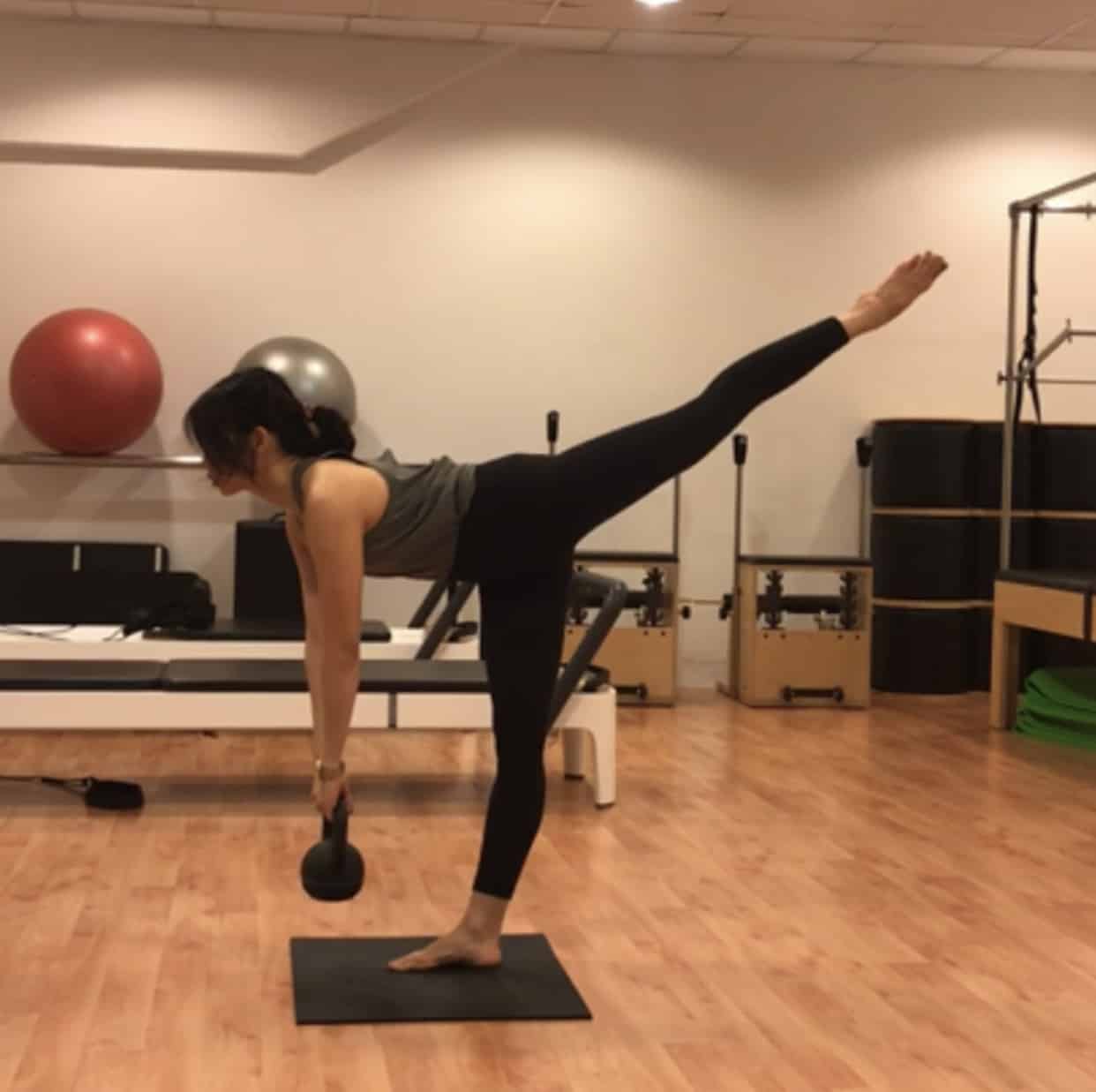A Bendy Body’s need for Pilates
Being a dancer is almost synonymous with being flexible. I’m sure you have chanced across a post on Instagram or the internet of a dancer displaying an insane range of flexibility in a hyper stretch of sorts.
Being naturally flexible myself, I honestly never gave it much thought; it might even sound outrageous to some but I never really experienced what a stretch felt like when I assumed a supposedly stretched position.
In ballet, while being very technical, my flexibility got me through many years of dance without any major injury. A stretching segment of a dance class was like a rest, and the longer I held any stretch, the deeper I was able to go into it without much trouble. While studying in the University, I auditioned and qualified for a small contemporary dance company and suddenly my training intensity increased. Unfortunately, my flexibility led me to injury. That was when I was introduced to Pilates.
Control and alignment are paramount in Pilates. It was working with the Pilates equipment that I discovered being able to control and engage my muscles in the end range required a lot of hard work. In addition, it was at Pilates Bodytree that I learnt that passive, prolonged stretching techniques are not suitable for all body types – especially flexible body types.
Passive and Prolonged Stretching Vs. Active and Dynamic Stretching
As defined by the American Sports and Fitness Association, passive stretching involves an external force being provided through partner stretches, using stretching accessories and/or just using gravity to assist your stretch i.e. If the stretch is reliant on an external force, it is a passive stretch. A prolonged stretch refers to one being held in a position for a length of time.
Prolonged stretches elongate anatomical structures that are meant to stabilise joints (Critchfield); thus for an already unstable or flexible body type, such stretching increases the risk of injury.
As for active and dynamic stretching, muscular contractions and movements are involved.
Example: Glutes Stretch
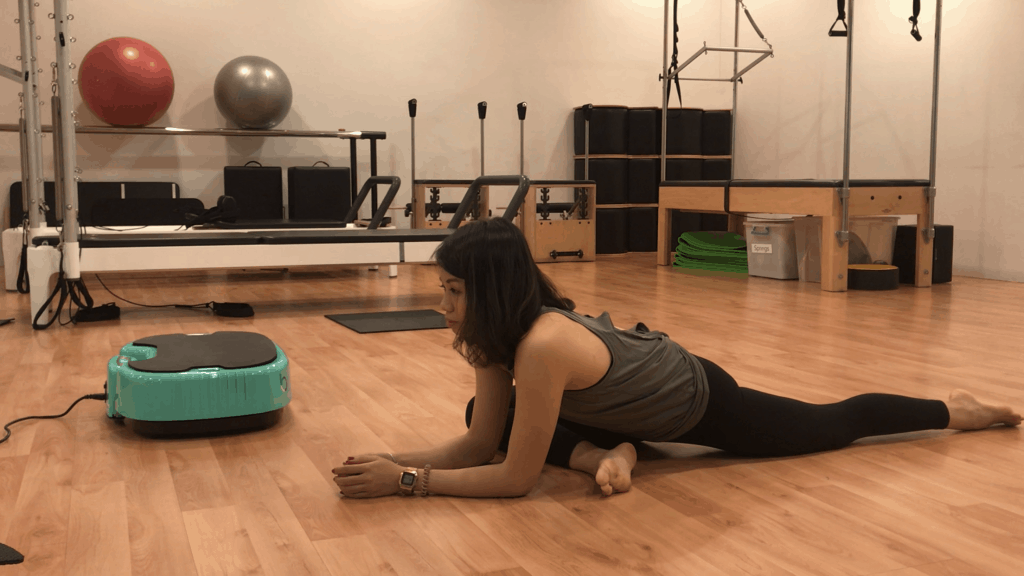
Fig.1 Passive glutes stretch

Fig. 2 Active and Dynamic Glutes Stretch on PowerPlate
Another technique in flexibility training is to stretch the muscles in 3D or in different planes; by moving forward and backwards, side to side and in rotation. Fig.2 shows the stretch being done moving forward and backwards while on the PowerPlate. The PowerPlate provides vibrations that accelerate the effect of the stretch.
Mobility Training
After training flexibility, it is also important to train one’s mobility. Most use these words interchangeably, but mobility incorporates flexibility and strength, which is crucial in being stable in one’s end range. It was only after training with Pilates that my body understood how to activate while being stretched, thus making it possible to feel my hamstrings and glutes working in a weighted deadlift.


Fig 3. Demonstrating a balletic deadlift with a kettlebell.
In the Accelerated Flexibility Training Workshop, other stretch techniques (than the one mentioned) as well as learning how the PowerPlate can improve your stretch results are covered. If you are seeking ways to improve your flexibility fast, book your spot for the upcoming session in June here.
We also run the Accelerated Flexibility Special Class from time to time, if you are interested, email to info@pilatesbodytree.com
More on PowerPlate Technology here.
References:
“Active vs. Passive Stretching – Know the Difference!” American Sport and Fitness, https://www.americansportandfitness.com/blogs/fitness-blog/active-vs-passive-stretching-know-the-difference. Accessed 10 May 2019.
Critchfield, Brenda. “Stretching for Dancers” IADMS, 2011, https://www.iadms.org/page/353. Accessed 14 May 2019.

